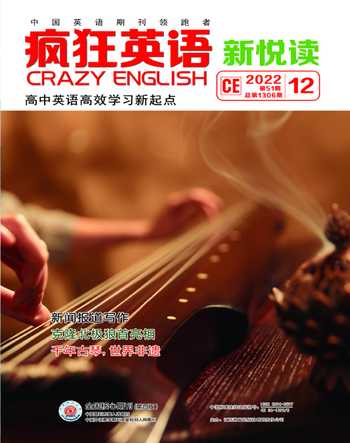气候变化与文化遗产
周晨曲
全球变暖不仅影响着人类自身的生存状况,还将对世界各地的文化遗产造成巨大影响!
1 The number of disasters driven by climate change has increased by four times during the past five decades, according to the World Meteorological Organization (WMO). The storm that flooded Germany and Belgium, the wildfires in Siberia and the severe heatwave in Canada reflect a global trend of increasing frequency of extreme weather. The Center for Climate and Emergency Solutions (C2ES), an environmental non?profit organization, noted that a warming world is causing more frequent extreme weather events.
2 In the US, roughly 13,000 archaeological sites could be damaged by the end of this century due to thawing permafrost (永冻层) and rising sea level, according to a study based on the Digital Index of North American Archaeology (DINAA). It includes the Trujillo Adobe, which was constructed in 1862 and now serves as a testament of migration and settlement in southern California, and the Bering Land Bridge National Preserve on the western coast of Alaska, home to archaeological artifacts (人工制品) that record the first human to live in North America.
3 Meanwhile, the northeast region of the US will have been likely to experience at least a 40 percent increase in heavy rain events by the end of the century, according to National Oceanic and Atmospheric Administration. The region has already seen a 55 percent increase in past decades.
4 Coastal areas in other parts of the world will also see continued sea?level rise throughout the 21st century that leads to more frequent coastal flooding, according to the Intergovernmental Panel on Climate Change (IPCC). Extreme sea?level events that happen once in 100 years will have been likely to occur every year by the end of this century.
5 The Furness Abbey in northwest England, has experienced increased erosion (侵蚀). Meanwhile, coastal erosion in southeast England continues to affect the medieval (中世紀的) town of Dunwich. Once one of the 10th largest towns in England, it has largely disappeared into the sea.
1. How does the author show the increasing frequency of extreme weather?
A. By asking questions. B. By listing numbers.
C. By giving examples. D. By doing research.
2. What may do damage to American archaeological sites according to paragraph 2?
A. Testament to migration. B. Rising sea level.
C. Increasing population. D. Human activities.
3. How often will extreme sea?level events happen by the end of this century?
A. Every one hundred years. B. Every fifty years.
C. Every ten years. D. Every year.
4. Why are the Furness Abbey and Dunwich mentioned?
A. To show the harm of coastal erosion.
B. To prove their popularity around the world.
C. To offer advice on heritage protection.
D. To attract more visitors to them.
語法填空
The Torch Festival (火把节) is 1. traditional festival which is celebrated among some ethnic groups in southwestern China. It usually 2. (fall) on the 24th or 25th of June, with three days of 3. (celebrate). The festival came from ancestors worship (崇拜) of fire. For some ethnic groups, its a tradition in the festival for elders to share farming experience 4. young people and educate them about 5. (take) care of crops.
During the festival, big torches are made to stand in all villages, with small torches 6. (place) in front of the door of each house. When night falls, the torches 7. (light) and the villages are bright. At the same time, people walk around the fields and houses, 8. (hold) small torches and placing the torches in the field corners. Inside the villages, young people are singing and dancing around the big torches 9. keep burning throughout the night. Other 10. (activity), like horse races, are also held during the festival.

